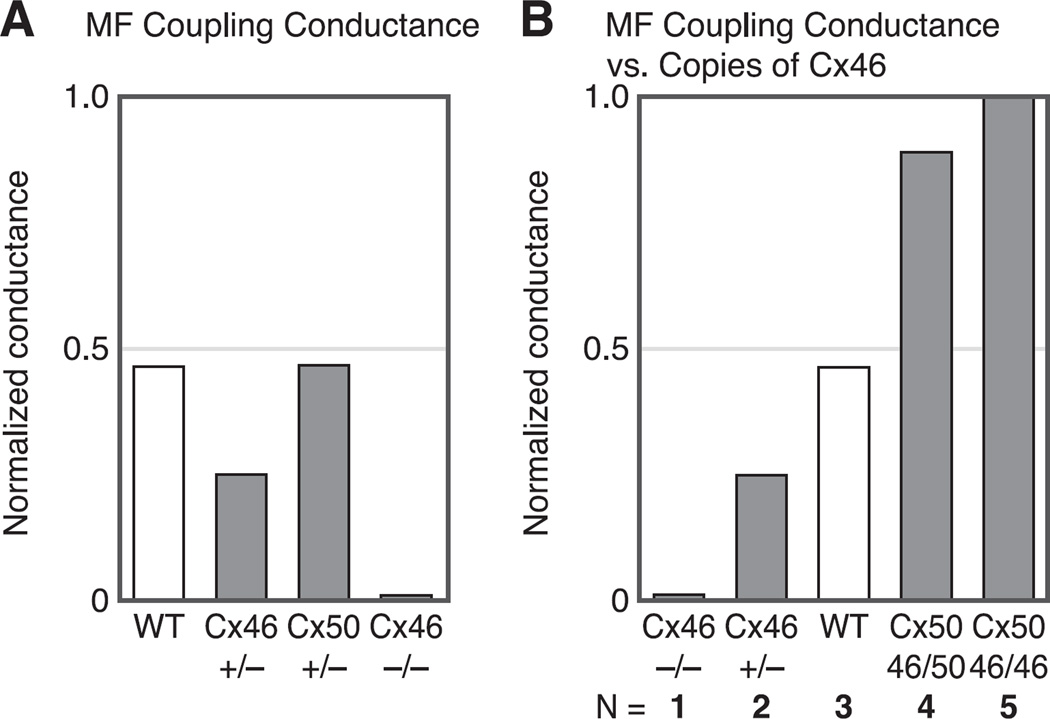Fig. 8.
A summary of the properties of gap junction coupling conductance in the mature fibers (MF). A: the effects of knockout of Cx46 and Cx50 on MF coupling conductance. The conductances are normalized to the average value in the DF, which is ~1 S/cm2 of cell-to-cell contact. The reductions in coupling conductance in the Cx46+/− and Cx46−/− lenses are from Gong et al. (78). The data from Cx50+/− lenses are from Baldo et al. (8). In the MF of WT lenses, the average coupling conductance is about half that of DF. Knocking out half of Cx46 (Cx46+/−) caused a 50% reduction in MF coupling conductance, whereas knocking out all of Cx46 (Cx46−/−) reduced coupling to zero. In contrast, knocking out half of Cx50 (Cx50+/−) had no effect on MF coupling. In the Cx50−/− lenses, coupling decreased, but so did all transport parameters, suggesting indirect effects. The Cx50+/− lenses were perfectly healthy, but there was no effect on coupling, suggesting Cx50 does not contribute to MF coupling, consistent with the results from the Cx46+/− and Cx46−/− lenses. B: the effects of knockout (KO) and knock in (KI) of Cx46 on MF coupling conductance. The KO data are from Gong et al. (78). The KI data are from Martinez-Wittinghan et al. (127). The normalized MF coupling conductance is almost linearly proportional to the number of copies of Cx46 being expressed, suggesting Cx46 is the only functional connexin in the MF.

